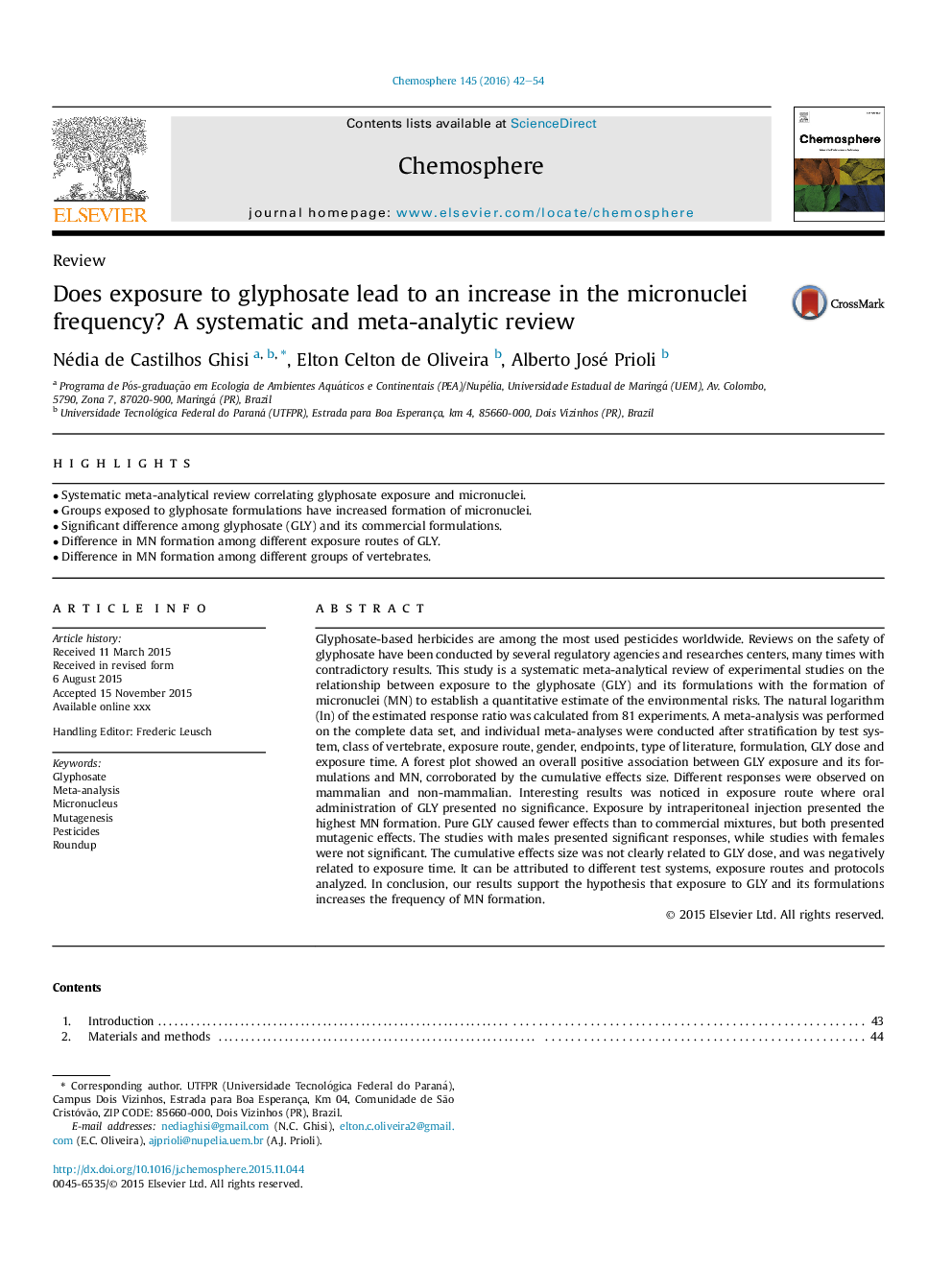| Article ID | Journal | Published Year | Pages | File Type |
|---|---|---|---|---|
| 6307067 | Chemosphere | 2016 | 13 Pages |
Abstract
Glyphosate-based herbicides are among the most used pesticides worldwide. Reviews on the safety of glyphosate have been conducted by several regulatory agencies and researches centers, many times with contradictory results. This study is a systematic meta-analytical review of experimental studies on the relationship between exposure to the glyphosate (GLY) and its formulations with the formation of micronuclei (MN) to establish a quantitative estimate of the environmental risks. The natural logarithm (ln) of the estimated response ratio was calculated from 81 experiments. A meta-analysis was performed on the complete data set, and individual meta-analyses were conducted after stratification by test system, class of vertebrate, exposure route, gender, endpoints, type of literature, formulation, GLY dose and exposure time. A forest plot showed an overall positive association between GLY exposure and its formulations and MN, corroborated by the cumulative effects size. Different responses were observed on mammalian and non-mammalian. Interesting results was noticed in exposure route where oral administration of GLY presented no significance. Exposure by intraperitoneal injection presented the highest MN formation. Pure GLY caused fewer effects than to commercial mixtures, but both presented mutagenic effects. The studies with males presented significant responses, while studies with females were not significant. The cumulative effects size was not clearly related to GLY dose, and was negatively related to exposure time. It can be attributed to different test systems, exposure routes and protocols analyzed. In conclusion, our results support the hypothesis that exposure to GLY and its formulations increases the frequency of MN formation.
Related Topics
Life Sciences
Environmental Science
Environmental Chemistry
Authors
Nédia de Castilhos Ghisi, Elton Celton de Oliveira, Alberto José Prioli,
